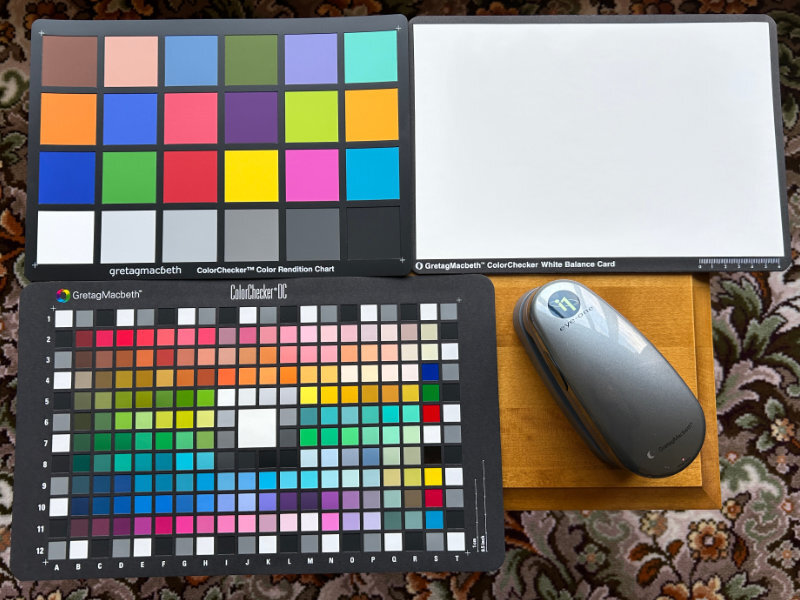A 500K colour difference between photos is not subtle: the difference between the typical Sunny and Cloudy white balance settings is 800K.
Depends totally in what range of "Kelvin" you are taking into account.
500K difference under "tungsten" light conditions, is a huge more difference than under daylight conditions.
As I said above I am familiar with calibrating displays, cameras and printers having created custom profiles in the past.
And as I also said I do own the necessary test charts and hardware to do so:
But despite that extra hardware/software you don't seem to understand the basics of "using" it in combination with a digital camera?
And how does a digital camera "on its own" (without those features) react when reading "colour" through photographic scenes?
although the need for such has practically been eliminated since current cameras, printers and higher end displays
are typically very well profiled and calibrated by the manufacturers.
That is a "typically" wrong conclusion and misunderstanding when it comes to the
exact correct white balance and use of profiles.
Despite far-reaching today algorithms for all kinds of "natural scenes" used in digital camera's, and a "base" calibration in advance (which is really good).
A correct white balance from
"random subjects" with
deviating colours in all kinds of circumstances,
more green, more red, more blue.... can
not be recognised / measured as fully "correct".
Because an exact white balance correction cannot be read out from "coincidental" colour dominants in some photo scene / composition in "free nature".
That only is possible by exact reading / measurements of photographed calibrated colour patches.
Hence the proposal to photograph a "gray card" in your photo scene.
A reference to fit by a digital camera is included by every serious digital camera's manual, how to do.
Enough. I'm not going to respond any further.
Well, that is your choice. You are free to respond yes or no.
As I wrote more early, if you think several options of your camera doesn't function properly?
The "only correct way for understanding" what you camera is doing, is to contact
Sigma Support itself for explanation.
-


